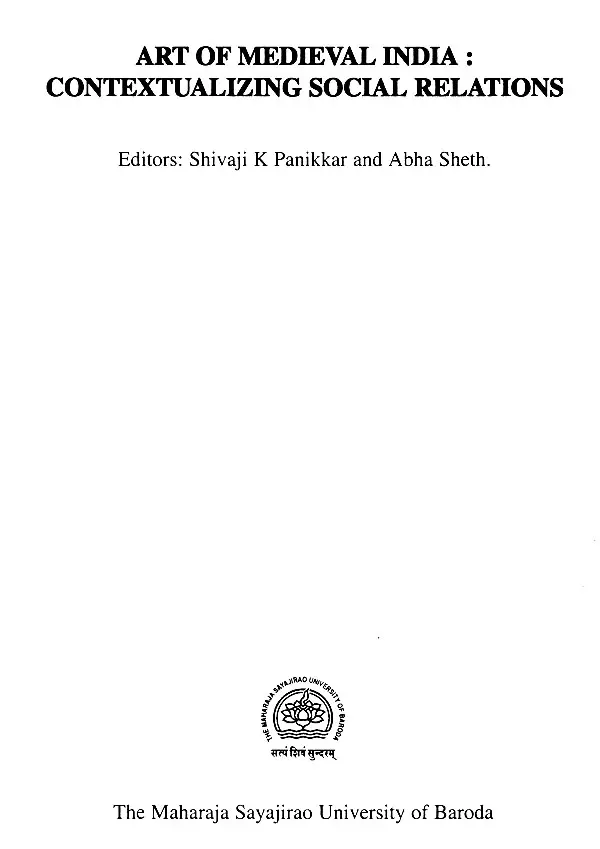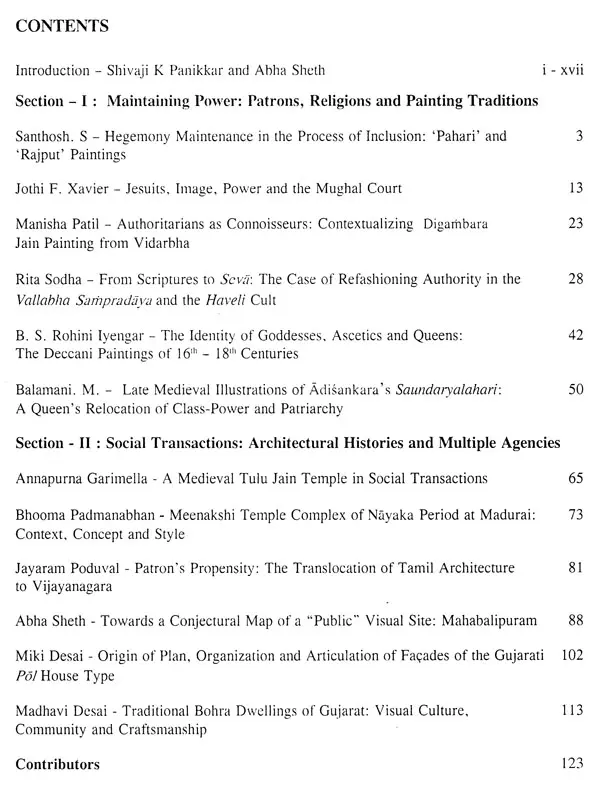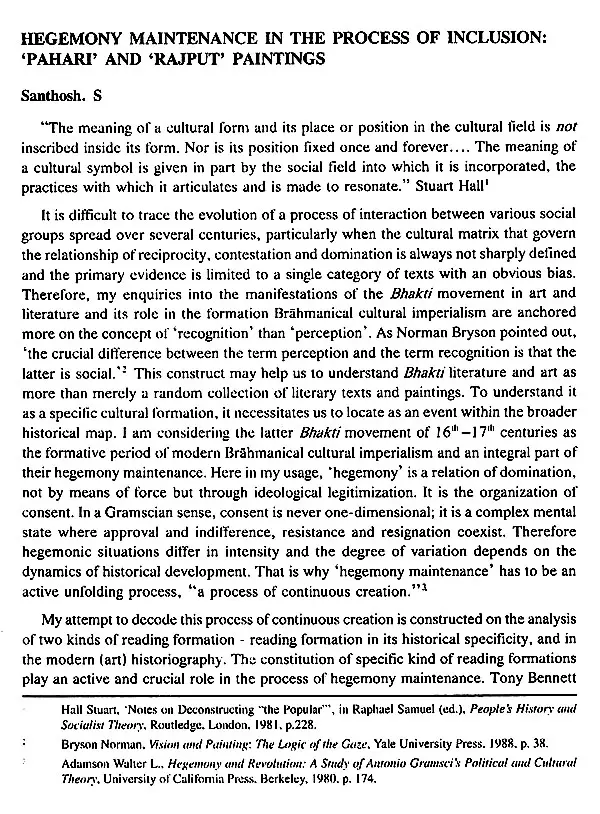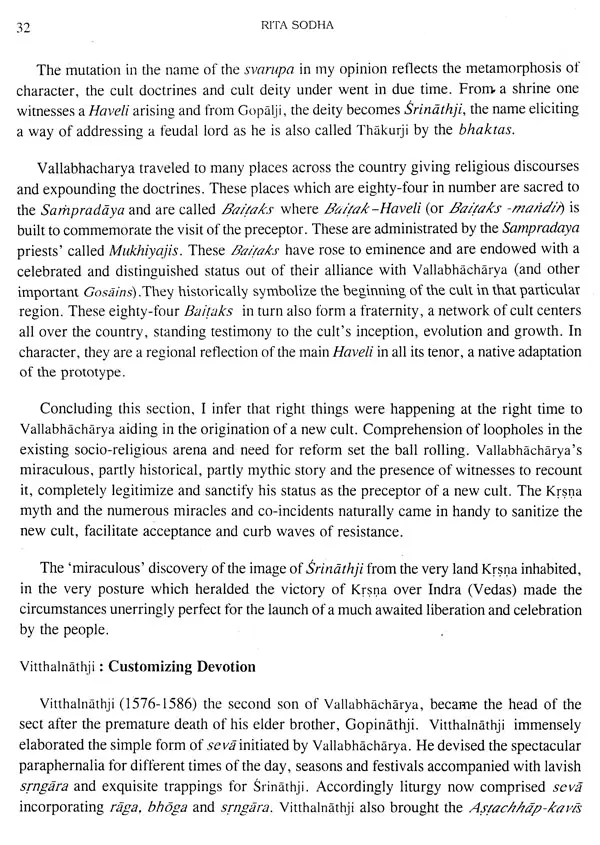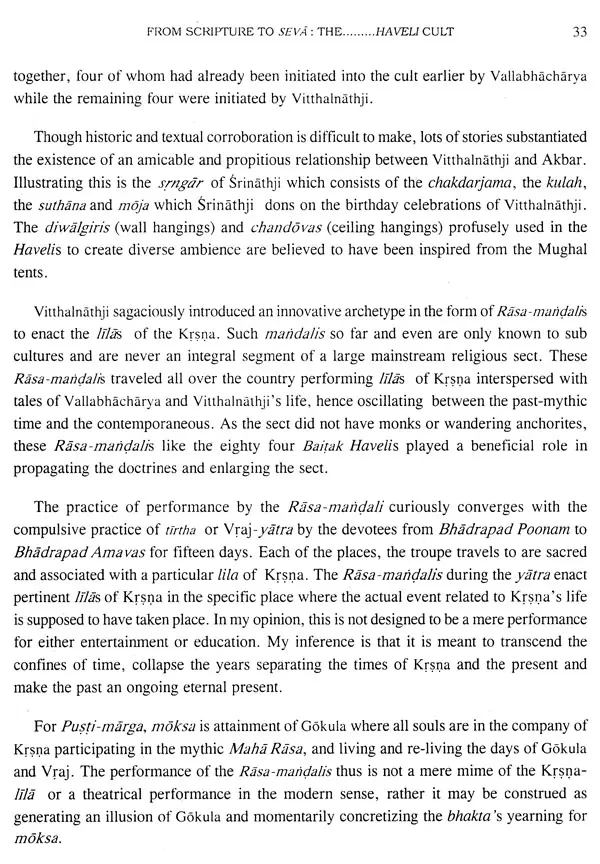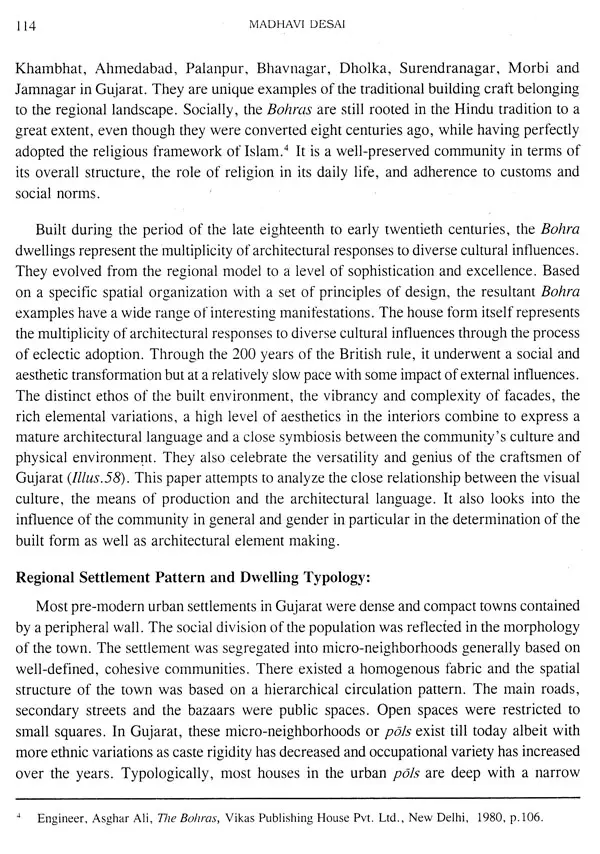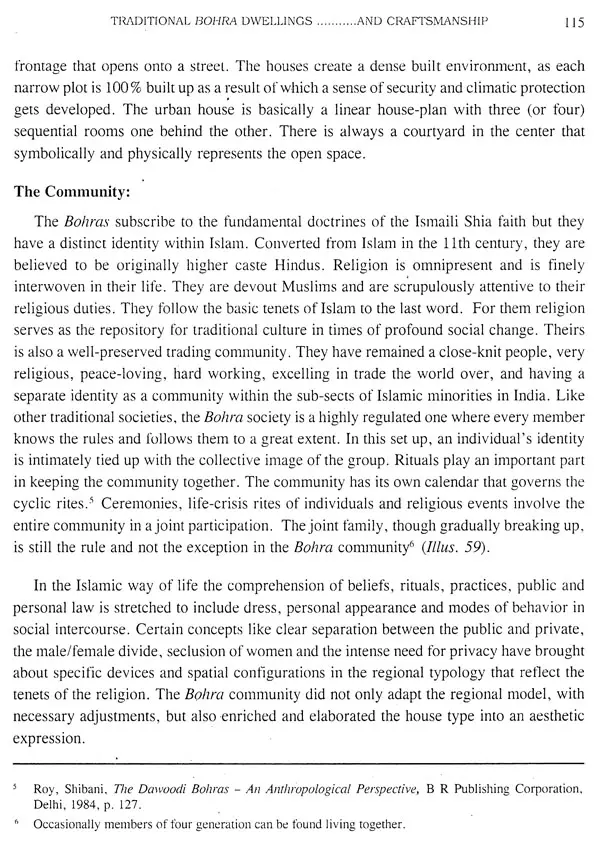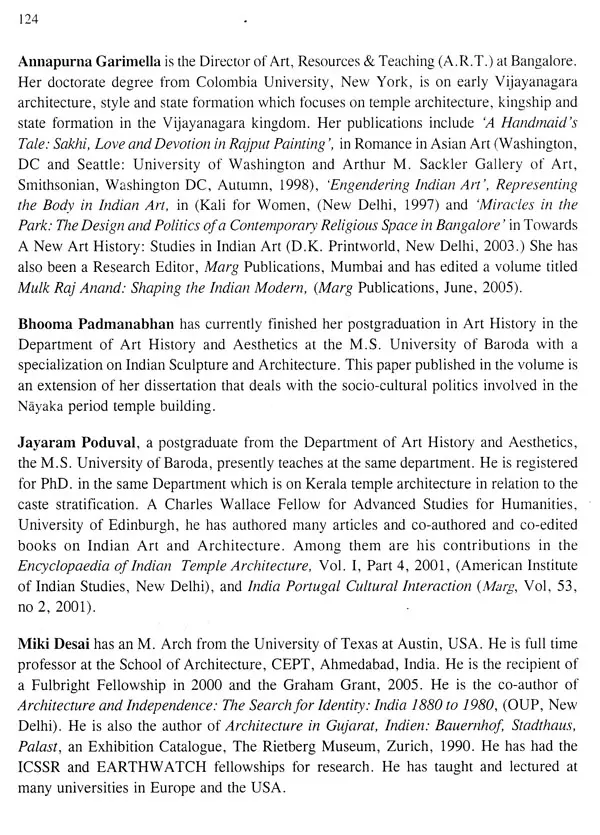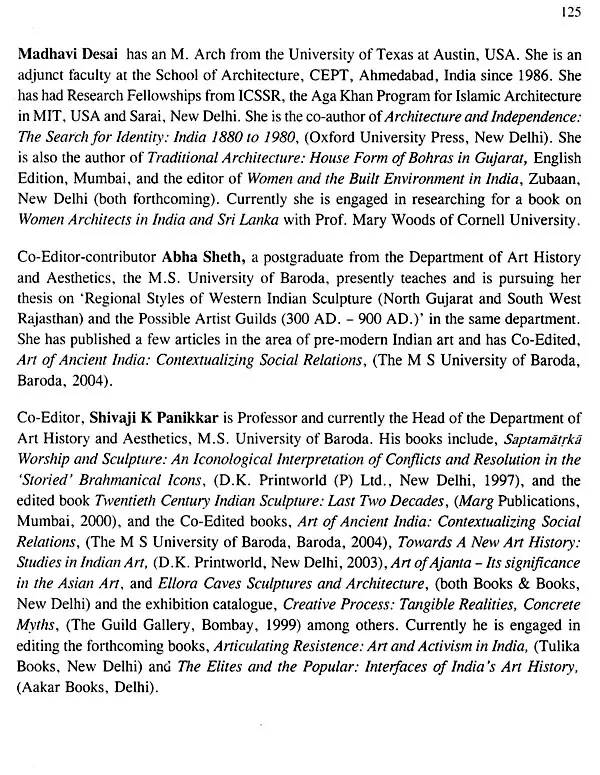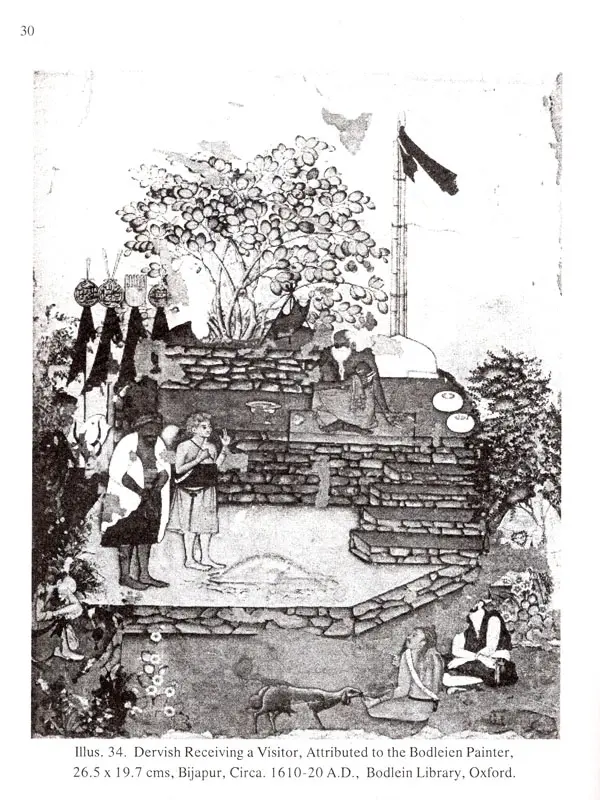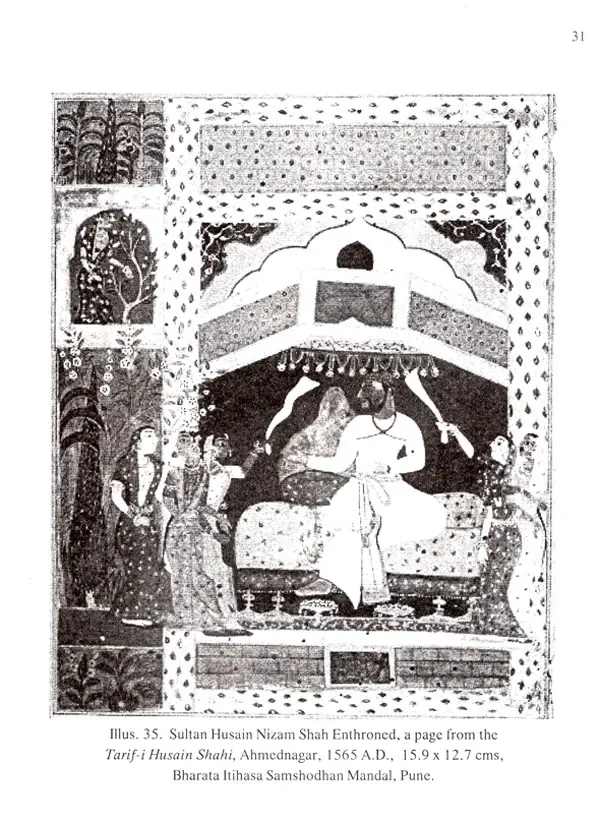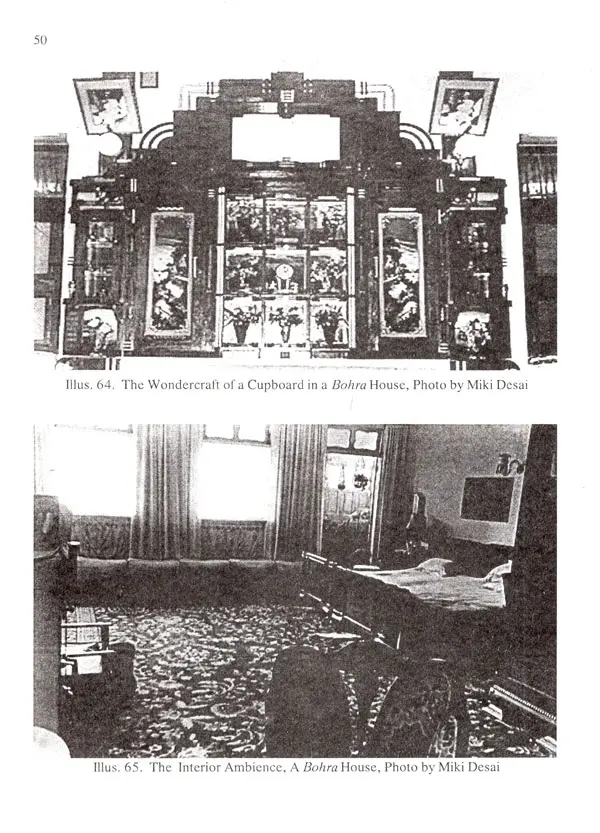
Art of Medieval India: Contextualizing Social Relations
Book Specification
| Item Code: | UAQ903 |
| Author: | Shivaji K Panikkar and Abha Sheth |
| Publisher: | The Mahraja Sayajirao University of Barodra |
| Language: | English |
| Edition: | 2005 |
| Pages: | 192 (Throughout B/w Illustrations) |
| Cover: | PAPERBACK |
| Other Details | 10.00 X 7.50 inch |
| Weight | 400 gm |
Book Description
The present publication is a sequel to the book Art of Ancient India: Contextualizing the Social Relations edited by the same authors (The M.S. University of Baroda, Vadodara, March 2004). The papers included in both the volumes are largely drawn from a national conference titled, Theorizing India's Pre-Modern Visual Culture: Issues of Class, Caste, Gender and Sexualities", which was held at the Department of Art History and Aesthetics. M.S. University on February 13, 14 and 15, 2003.
The present volume focuses on the art history of the Medieval India. Located within the premises of a critical assessment of the conventional modes and methodologies employed in the practice of art historical writings dealing with Indian art, the purpose of the conference was to address the glaring absence of relating art to specific historical processes. On the whole it was an attempt to engage with the socio-political-economic contexts in relation to pre-modern traditions of Indian art that implicated class, caste and gender identities and political undercurrents in relation to art production and viewing. It hoped to critically engage with, or even attempt to dislodge the conventional paradigms of the Art Historical discipline that is slotted-in with an art-object oriented approach. To certain extent the conference did enable to critically reconsider the existing frameworks/perspectives of art historical research and discourses, and as a whole it was a definite step in furthering the understanding of pre-modern Indian art; its varied objects, monuments and institutions within the changing perceptions about the subcontinent's socio-politico-historical flux As such the papers that were presented displayed a growing imterest in analyzing art within the critical categories of differences between various classes, castes. genders and sexual identities. This was so since most of the presentations generally though, but definitively related art history to the specific historical contexts in which they were produced and consumed/viewed In other words, the very relation of art to the sociological, political and economic circumstances that produced meanings in specific contexts was subjected to critical scrutiny. Though most papers in the publication may be found as largely following object oriented approach (entailing issues of identification of style and content, authorship, attribution and chronology), there are attempts in (partially even) replacing the object oriented approach by framework oriented approach.
The focus of the selected eight papers published as Art of Ancient India: Contextualizing the Social Relations largely dealt with ancient period that ends with 6 century AD. Although not exhaustive of the theme, it did maintain certain coherence and consistency in the issues that are addressed. One of the key themes was an engagement with understanding of the historiographical structuring of the makeup of discipline of India's art history from the perspective of unraveling the cultural Politics of "understanding" pre-modern Indian Art. This inevitably brought forth the problems in mapping. interpreting and re-contextualizing of art objects within the conceptual frameworks that under-grid Art Historical canons whether it is structuring museum displays or in scholarly discourses. Another significant thematic was with regard to the question of ancient Indian artists' anonymity and a fresh attempt in interpreting the identity within the larger social fabric. Specific identity questions, of say Buddhists in relation to other religious communities had been also a concern. Social relations between various strata of society in relation to art production, patronage, consumption/viewer-ship and the ideological determinants in art making, temple building, mythmaking and iconography had also been of significant concerns.
Book's Contents and Sample Pages
